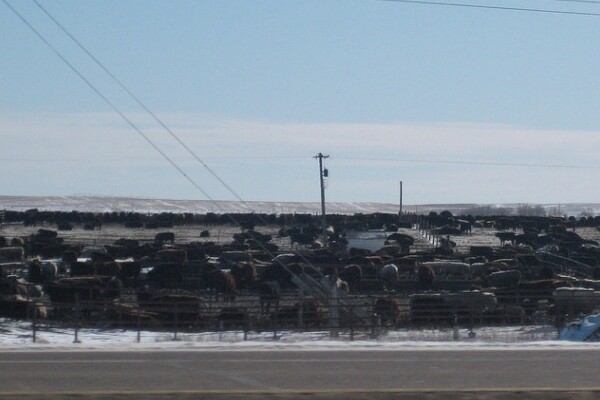Bipartisan Animal Antibiotic Bill Introduced

At this point, the question isn't whether or not overprescribing antibiotics to animals is bad, but rather, how do we fix it?
The FDA tried to do it in late 2013, issuing voluntary guidelines to drug manufacturers and farmers to eliminate antibiotic usage for animal growth production. (To see how well that plan worked, look up the word "voluntary.") See, the main issue at stake is whether the antibiotics being used are for growth production or disease prevention. The latter makes sense, but because of the lax laws, farmers using antibiotics for the former can easily get their hands on the drugs.
In August of 2014, a trio of Democratic senators sent a letter to the FDA expressing concern over this loophole. And now the trio has added a fourth to their cohort, Susan Collins (R-ME). Together, the four have proposed a new bill that would close this loophole. I spoke to Dr. Gail Hansen, the senior officer for the Pew Foundation's antibiotic resistance project, about the prospects of this new bill and why it's important.
Why is this bill important?
Dr. Gail Hansen: The FDA said that by the end of 2016 that antibiotics can't be used for growth promotion and deficiency. But it still leaves a big gray area. Antibiotics can be used at the same levels for "prevention." You can call it growth promotion, you can call it prevention, but you're doing the same thing. It sort of doesn't matter what you call it. So, the bill is looking to that grey area of prevention and saying, look, there are a lot of drugs that were approved 40, 50, 60 years ago, before we really had the concerns about antibiotic resistance before we have now, before we have the science we have now. So let's look at all of those labels that are saying they are preventing something, and see if they are truly safe and effective.
How does this bill help?
Dr. Hansen: Right now, most of the drugs are available over the counter, both for prevention and growth promotion. So, we need some veterinarian oversight, assurances that these are the right things to do, and also to give the vets some guidance as to what really works and at what doses and at what length of time. Some of these prevention doses have no time limits on them at all, so they can be given over the lifetime of the animal. Granted, for a chicken that's not very long. But for a steer, that could be. For beef cattle, you're looking at a year-and-a-half to two years, and in theory, you could be so-called preventing disease that whole time.
Just how big of a problem is antibiotic resistance?
Dr. Hansen: The CDC and WHO have called antibiotic resistance a major health crisis, so for WHO to use a word like crisis means something. Most medical professions and public health groups are saying, yeah, antibiotic resistance is one of our top concerns. The CDC says it's one of their top concerns. It's real. It's not sort of a manufactured "maybe this is going to happen." Physicians are already running into the issue of having to tell patients or parents of patients, I'm sorry we have no drug that can treat this disease. Yes, we could have treated this disease with antibiotics 15 years ago, but that was 15 years ago and now we have nothing. That's not a place that physicians like to be in.
Will this bill have problems being passed?
Dr. Hansen: They're expecting some opposition, because they're looking at a change of how things are being done. Every time there's a change there's going to be some opposition. If you look at food animal industry folks, they will say they only use antibiotics when they absolutely need to. In human medicine, up to 50% of the prescriptions are either the wrong dose or the wrong drug or not needed at all. In animal medicine, most of those drugs are available over the counter, so you don't even have a trained medical professional looking at that and making those decisions. So any kind of change is going to be an issue, the food producers say they're only using antibiotics exactly as they should, and exactly as they need to. But we use an awful lot of... when we look at how many antibiotics we use at this country compared to other countries in the world that have more restrictions, we use a lot more. And I don't think that their animals are a lot sicker.
What are the chances it gets passed?
Dr. Hansen: The fact that its a bipartisan bill is a good thing. It's targeted and I think it's a really meaningful approach to reducing antibiotic resistance without saying you can't use antibiotics on animals. Sometimes you'll get sick animals, and for the health of the animal and for the health of the rest of the flock or the herd, sometimes antibiotics are exactly what you need. But it needs to be a mindful kind of thing, and not the first thing you think about it.


